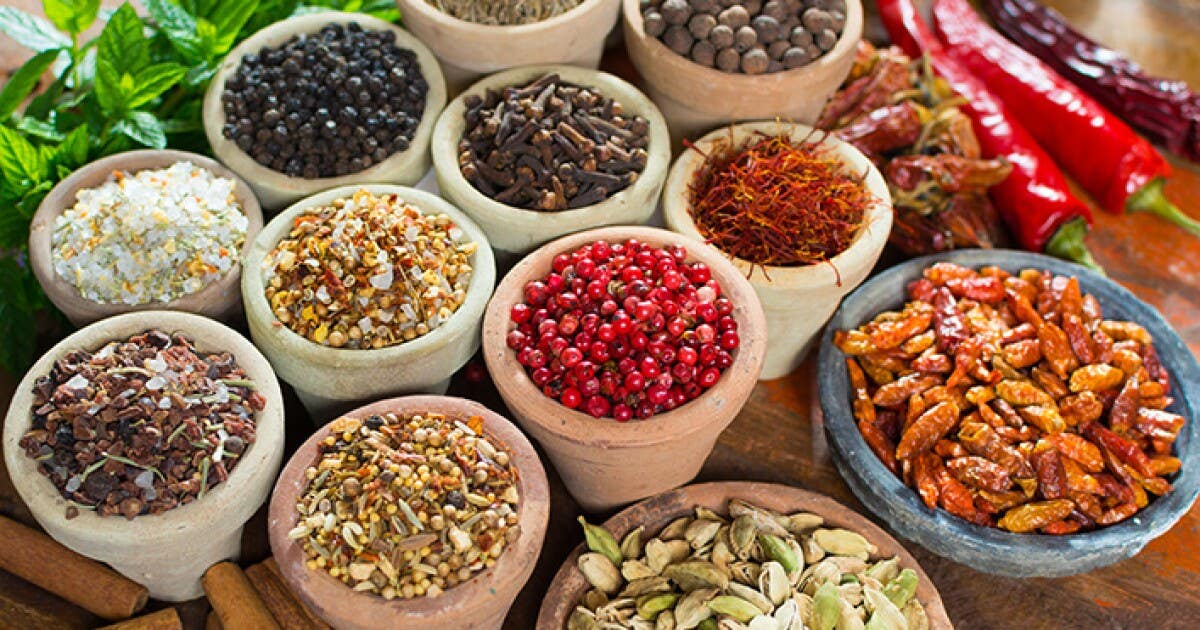Traditional native Indian medicine effective as type 2 diabetes treatment
Ayurveda is a traditional medical system that has been used for thousands of years in many South Asian countries such as India and Nepal.

[July 19, 2022: Charlotte Anscombe, University of Nottingham]
Ayurveda is a traditional medical system that has been used for thousands of years in many South Asian countries such as India and Nepal. (CREDIT: Creative Commons)
A new study, led by experts at the University of Nottingham, has found that several traditional medicines commonly used in South Asia, are effective in maintaining blood sugar levels in patients with type 2 diabetes.
Ayurveda is a traditional medical system that has been used for thousands of years in many South Asian countries such as India and Nepal. Some of the herbs included are also used in other parts of the world including Iran, China, and Mexico – to name a few.
A multi-pronged and individualised approach is used to manage health conditions such as lifestyle modification (including diet), Ayurvedic detoxifying and purifying therapies (e.g. Panchakarma), and Ayurvedic medicines (containing plant, animal, or mineral-origin ingredients – single or in combination).
In this new study, published in Frontiers in Pharmacology, experts conducted an in-depth review to show that these medicines are effective in blood sugar control in people with type 2 diabetes. Other beneficial effects, such as on body weight, blood pressure, cholesterol, and other diabetes-related parameters were also shown.
It is the first comprehensive systematic review on any traditional medicine (including Ayurveda), which included a wide range of Ayurvedic medicines. The research was led by Dr Kaushik Chattopadhyay, Associate Professor in Evidence Based Healthcare in the School of Medicine and the Nottingham Centre for Evidence Based Healthcare (A JBI Centre of Excellence) at the University. The team members have expertise in Ayurveda, diabetes, and this type of research, and are based in top institutes in the UK, India, and Nepal.
Related Stories:
Type 2 diabetes is a complex disorder that has major health, social, and economic consequences. Type 2 diabetes is one of the main diseases for which patients consult Ayurvedic practitioners and use Ayurvedic medicines, often continuously from the point of diagnosis.
Ayurvedic medicine is commonly used by patients as it fits with their health beliefs and culture. Its acceptability, satisfaction, and perceived relief are usually high, especially among rural, poor, older, and indigenous/minority populations. Many patients with type 2 diabetes prefer not to use Western medicines due to the associated side effects, cost, and mode of administration (e.g., injections).
Previous systematic reviews have shown the potential for managing type 2 diabetes with these medicines, however many need updating and none have provided a comprehensive summary of all the medicines evaluated for managing the condition.
Powerful Ayurvedic Herbs and Spices. (CREDIT: Creative Commons / Healthline)
As part of this review, the team searched a range of sources, including 18 electronic databases. Two hundred and nineteen articles were included in the review, which represented 199 randomised controlled trials (21,191 participants) and 98 Ayurvedic medicines.
Many Ayurvedic practitioners may view the inclusion of herb extracts and proprietary Ayurvedic medicines in this review as a deviation from the classical style of management. However, in reality, many Ayurvedic practitioners prescribe, and many people consume these types of medicines.
List of typical Ayurvedic herbs and spice:
1. Ashwagandha (Withania somnifera) is a small woody plant native to India and North Africa. Its root and berries are used to produce a very popular Ayurvedic remedy
2. Boswellia, also known as Indian frankincense or olibanum, is made from the resin of the Boswellia serrata tree. It’s known for its easily recognizable spicy, woody aroma.
3–5. Triphala is an Ayurvedic remedy consisting of the following three small medicinal fruits:
amla (Emblica officinalis, or Indian gooseberry)
bibhitaki (Terminalia bellirica)
haritaki (Terminalia chebula)
6. Brahmi (Bacopa monieri) is a staple herb in Ayurvedic medicine. According to test-tube and animal studies, brahmi appears to have strong anti-inflammatory properties that are as effective as common NSAIDs.
7. Cumin is a spice native to the Mediterranean and Southwest Asia. It’s made from the seeds of the Cuminum cyminum plant, which are known for their distinctive earthy, nutty, and spicy flavor.
8. Turmeric, the spice that gives curry its characteristic yellow color, is another popular Ayurvedic remedy. Curcumin, its main active compound, has powerful antioxidant and anti-inflammatory properties. Test-tube research shows that it may be equally or even more effective than some anti-inflammatory drugs — without all of their side effects.
9. Licorice root, which is native to Europe and Asia, comes from the Glycyrrhiza glabra plant and holds a central place in Ayurvedic medicine. Test-tube and human studies suggest that licorice root may help reduce inflammation and fight viruses and bacteria. It also appears to offer relief from a sore throat and promote oral health by protecting against dental cavities and Candida.
10. Gotu kola (Centella asiatica), or “the herb of longevity,” is another popular Ayurvedic remedy. It’s made from a tasteless, odorless plant with fan-shaped green leaves that grows in and around water. One small study suggests that gotu kola supplements may improve people’s memory after they have had a stroke.
11. Bitter melon (Momordica charantia) is a tropical vine closely related to zucchini, squash, cucumber, and pumpkin. It’s considered a staple in Asian cuisine and packed with nutrients and powerful antioxidants. Research suggests that bitter melon may help lower blood sugar levels and promote the secretion of insulin, the hormone responsible for keeping blood sugar levels stable.
12. Cardamom (Elettaria cardamomum), which is sometimes referred to as the “queen of spices,” has been part of Ayurvedic medicine since ancient times. Research suggests that cardamom powder may help reduce blood pressure in people with elevated levels. There’s also evidence that inhaling cardamom essential oil may increase the uptake of oxygen into the lungs during exercise.
Dr Chattopadhyay said: “This is the first time a thorough review has taken place looking at all these medicines on a much larger scale. The current evidence suggests the benefits of a range of Ayurvedic medicines in improving glycemic control in type 2 diabetes patients. Given the limitations of the available evidence and to strengthen the evidence base, high-quality randomised controlled trials should be conducted and reported.
“As part of the funded project, we have developed a clinical guideline for managing type 2 diabetes by Ayurvedic practitioners based on this evidence and will be evaluating it.”
Note: Materials provided by University of Nottingham. Content may be edited for style and length.
Like these kind of feel good stories? Get the Brighter Side of News' newsletter.
Joseph Shavit
Head Science News Writer | Communicating Innovation & Discovery
Based in Los Angeles, Joseph Shavit is an accomplished science journalist, head science news writer and co-founder at The Brighter Side of News, where he translates cutting-edge discoveries into compelling stories for a broad audience. With a strong background spanning science, business, product management, media leadership, and entrepreneurship, Joseph brings a unique perspective to science communication. His expertise allows him to uncover the intersection of technological advancements and market potential, shedding light on how groundbreaking research evolves into transformative products and industries.



